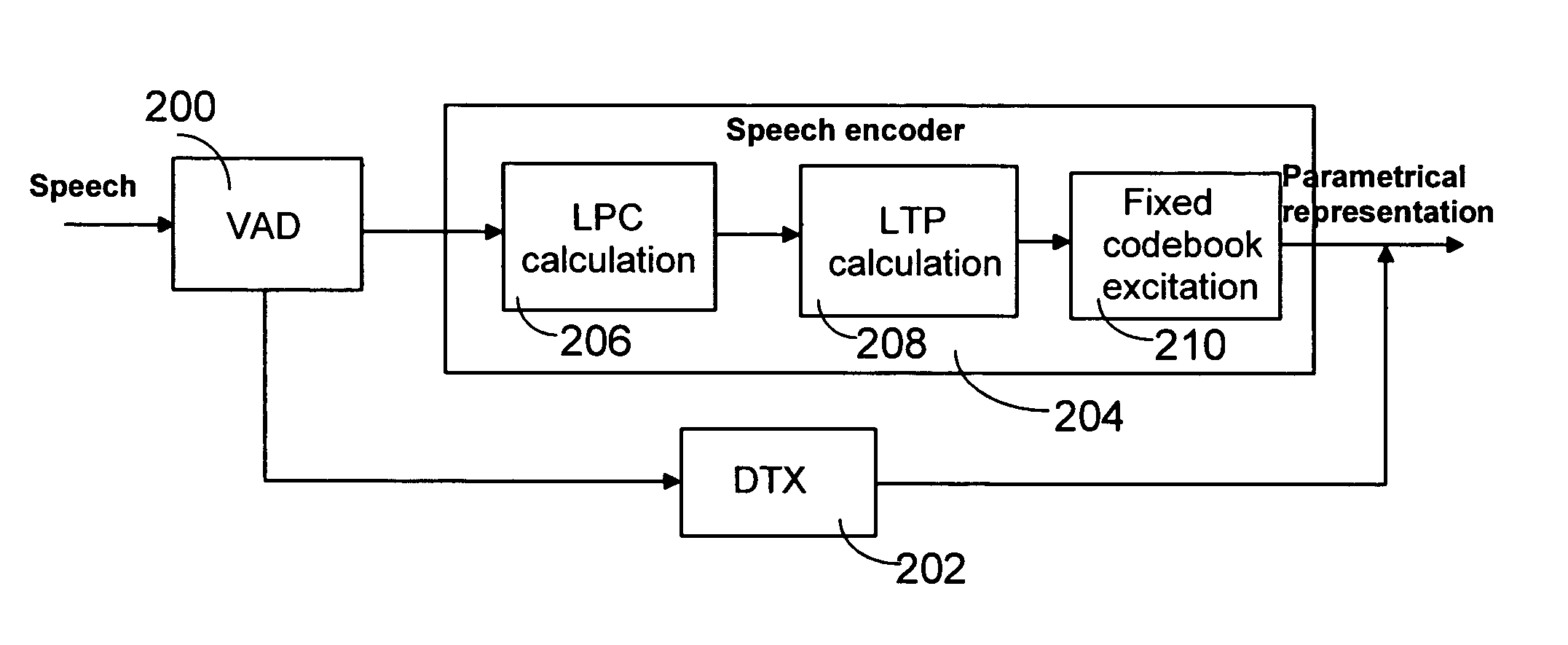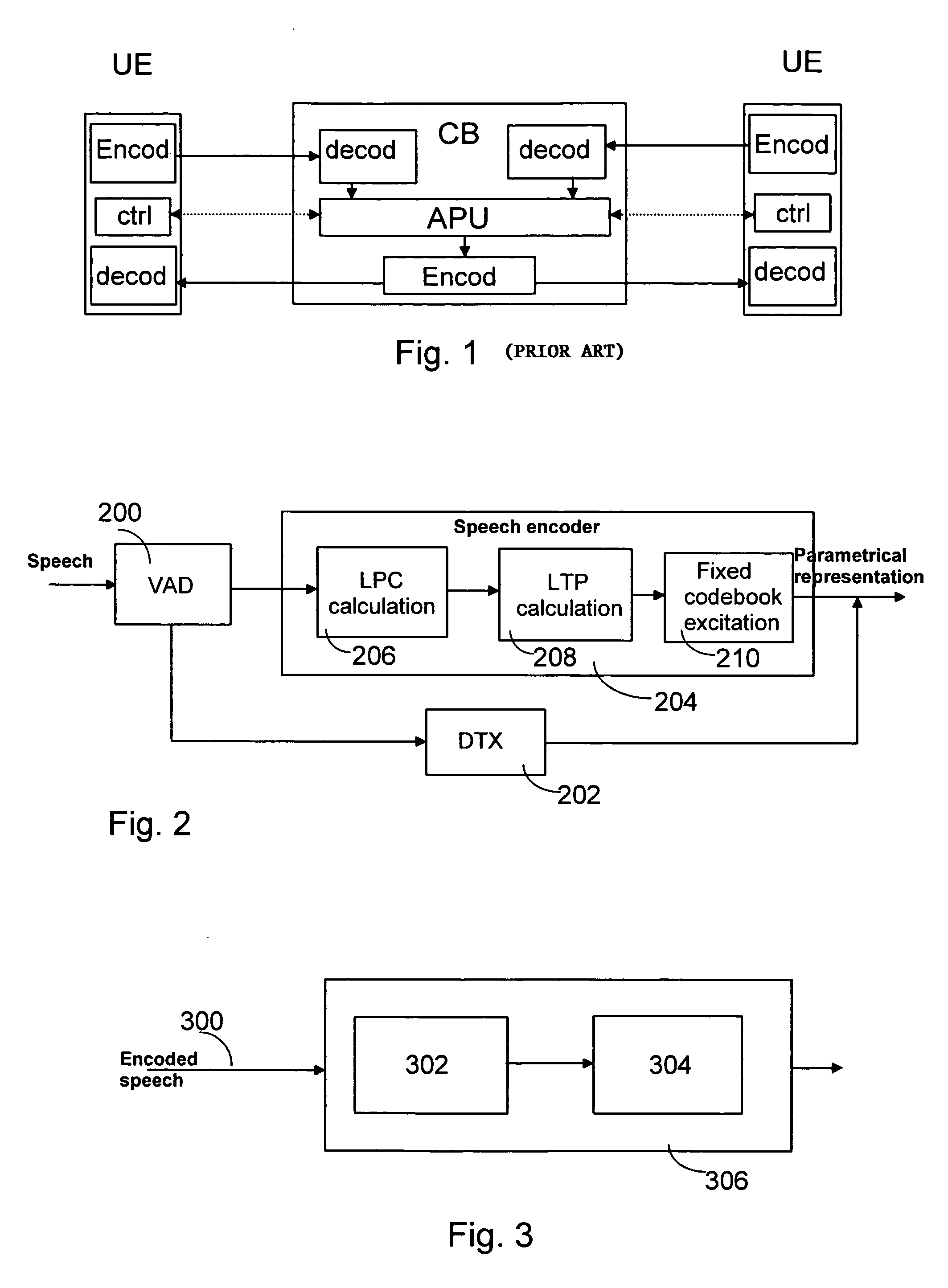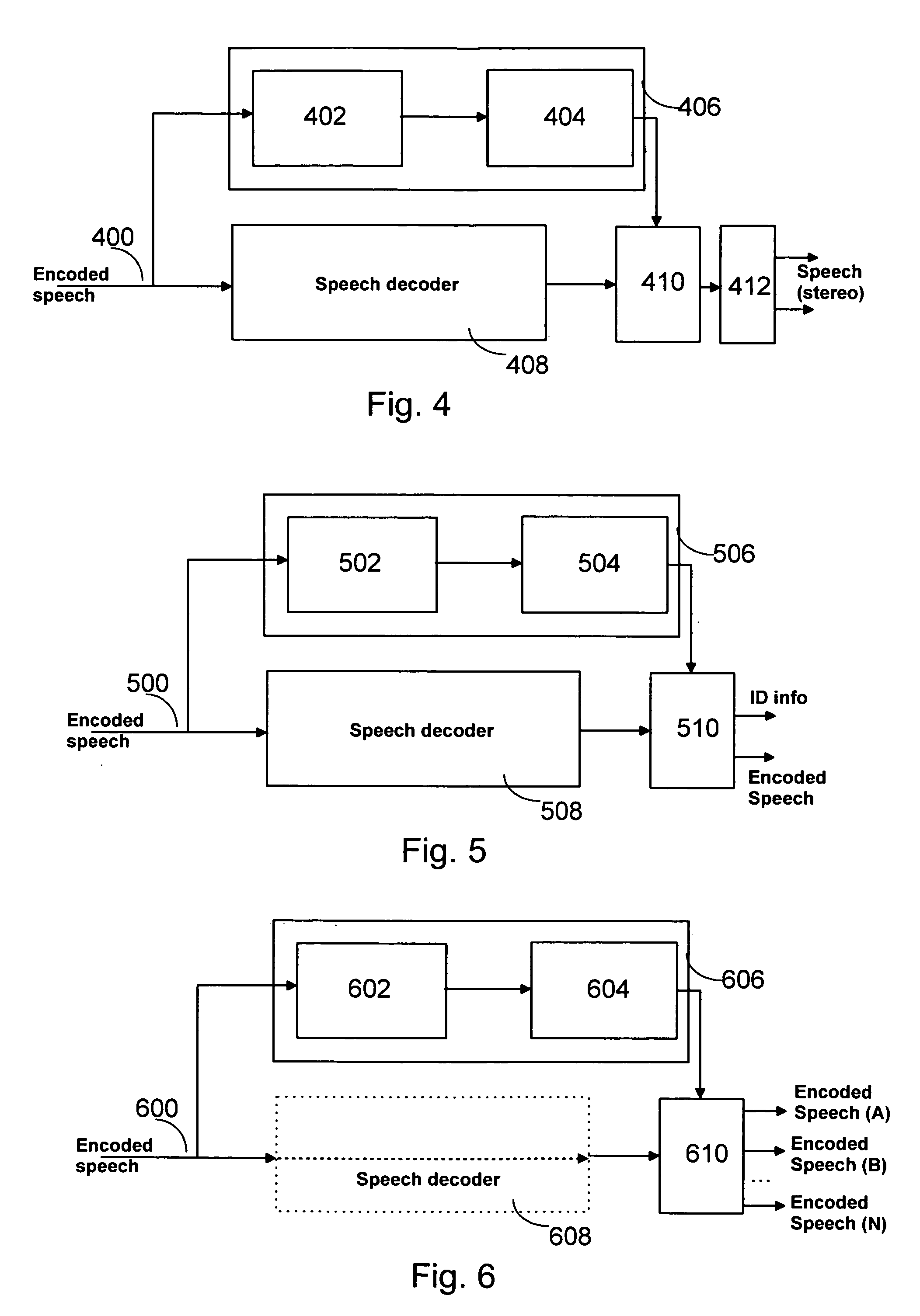Spatialization arrangement for conference call
a conference call and spatialization technology, applied in the field of teleconferencing systems, can solve the problems of increasing the bandwidth used in data transmission, unable to include additional information in standardized ways, and remarkable disadvantages of prior art arrangements
- Summary
- Abstract
- Description
- Claims
- Application Information
AI Technical Summary
Benefits of technology
Problems solved by technology
Method used
Image
Examples
Embodiment Construction
[0038] The invention is not restricted to any particular telecommunications system, but it can be used in any telecommunications system wherein the speech codecs analyse the characteristics of speech and include parameters of encoded speech in the audio signal to be transmitted to the recipients. Accordingly, the invention can utilize different audio and speech codecs, such as EFR / FR / HR speech codecs ((Enhanced) Full / Half Rate Codec) and Narrowband AMR or Wideband AMR speech codecs (Adaptive Multirate Codec) known per se from GSM / UMTS systems, and codecs used in MPEG1, MPEG2 and MPEG4 audio coding, such as an MC codec (Advanced Audio Coding), which are suitable for encoding / decoding different audio formats. The term audio codec thus refers both to audio codecs in the traditional sense and to speech codecs used in different systems and codecs with a scalable bit rate, such as CELP+MC according to MPEG4. Hence, a skilled person appreciates that the nature of the telecommunications sys...
PUM
 Login to View More
Login to View More Abstract
Description
Claims
Application Information
 Login to View More
Login to View More - R&D
- Intellectual Property
- Life Sciences
- Materials
- Tech Scout
- Unparalleled Data Quality
- Higher Quality Content
- 60% Fewer Hallucinations
Browse by: Latest US Patents, China's latest patents, Technical Efficacy Thesaurus, Application Domain, Technology Topic, Popular Technical Reports.
© 2025 PatSnap. All rights reserved.Legal|Privacy policy|Modern Slavery Act Transparency Statement|Sitemap|About US| Contact US: help@patsnap.com



